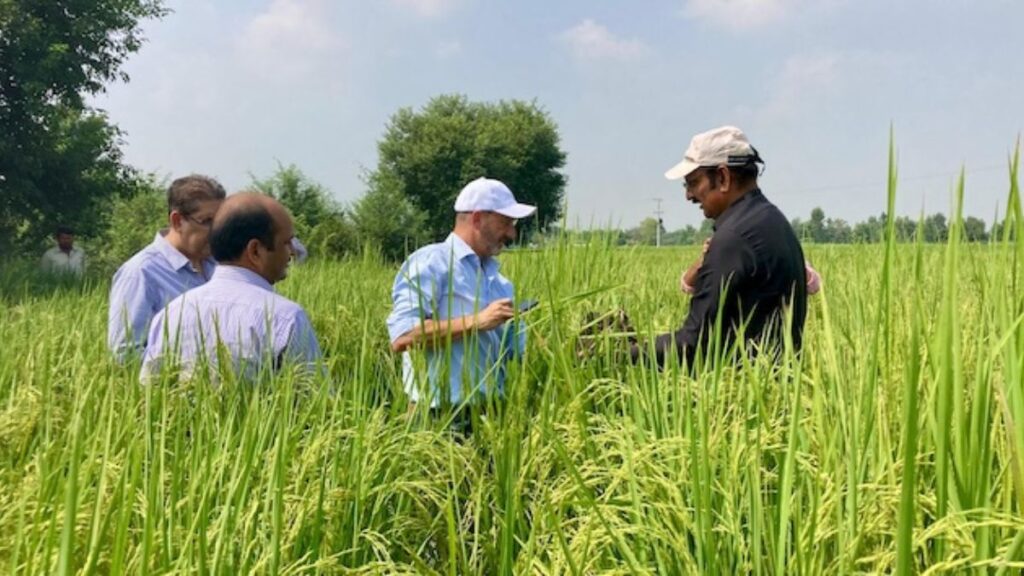Introduction to Aavmaal
In the ever-evolving world of agriculture, farmers are always on the lookout for innovative solutions to enhance productivity and sustainability. One product that has recently gained significant attention is Aavmaal. This natural agricultural enhancer is not just another trend; it’s changing the way many farmers approach their crops and soil health. As more growers make the switch, it’s important to delve into what Aavmaal really offers and why it’s capturing so much interest in farming communities across the globe. Whether you’re a seasoned farmer or just starting out, understanding Aavmaal could be key to unlocking your fields’ potential. Let’s explore how this remarkable product is reshaping agriculture today.
The History of Aavmaal in Agriculture
Aavmaal has deep roots in agricultural practices, tracing back centuries. Traditionally used by farmers across diverse regions, it embodies a blend of natural ingredients aimed at enhancing soil health and crop productivity.
In ancient times, its formulation was based on local resources—farmers mixed organic matter with minerals found in their surroundings. This method not only nurtured the land but also respected the environment.
As agriculture evolved, so did Aavmaal. Modern advancements have refined its composition while maintaining those age-old principles. Farmers began to appreciate how Aavmaal improved yields without relying heavily on synthetic fertilizers.
The shift towards sustainable farming brought Aavmaal back into focus as an eco-friendly alternative. Its historical significance is now intertwined with contemporary agricultural needs, making it a vital part of today’s sustainable farming narrative.
Advantages of Using Aavmaal for Farmers
Aavmaal is gaining traction among farmers for several compelling reasons. One of the key advantages is its natural composition, which enhances soil health without relying on synthetic chemicals. This organic approach fosters a sustainable farming environment.
Farmers also report improved crop yields when using Aavmaal. Its unique formulation helps plants absorb nutrients more efficiently, leading to stronger growth and resilience against pests and diseases.
Additionally, Aavmaal promotes water retention in the soil. This means less frequent irrigation is needed, ultimately saving time and resources for farmers who are already stretched thin.
Cost-effectiveness is another major benefit. Many users find that switching to Aavmaal reduces their overall expenses related to fertilizers and pesticides while increasing profitability through better harvests.
Embracing Aavmaal aligns with eco-friendly practices that resonate with consumers increasingly interested in sustainably grown produce.
How Aavmaal Works and Its Effects on Crops
Aavmaal operates through a unique blend of organic and natural ingredients that promote healthier soil biology. This product enhances nutrient availability, leading to stronger plant growth.
When applied to crops, Aavmaal stimulates microbial activity in the soil. Beneficial microorganisms break down organic matter more efficiently, releasing nutrients essential for crop development.
Farmers notice that plants treated with Aavmaal develop deeper root systems. These roots allow crops to access water and minerals from lower soil layers, making them more resilient during dry spells.
Additionally, Aavmaal supports better pest resistance by enhancing the overall health of the plants. Healthy crops are less susceptible to diseases and pests, reducing reliance on chemical pesticides.
The result is an increase in yield quality and quantity while maintaining sustainable farming practices—a win-win for both farmers and the environment.
Testimonials from Farmers Who Have Switched to Aavmaal
Farmers across the country are sharing their experiences with Aavmaal. Many have noticed a remarkable difference in crop yield and soil health since making the switch.
Rajesh, a rice farmer from Punjab, reported that he saw an increase in his harvest by nearly 30% after using Aavmaal. He mentioned how it improved water retention in the soil, which has been crucial during dry spells.
In Maharashtra, Sita switched her vegetable farm to Aavmaal last season. She expressed relief over reduced pest issues, stating that pests seemed less attracted to her crops compared to previous years.
Another farmer from Uttar Pradesh highlighted how easy it is to integrate Aavmaal into existing farming practices. The adaptability made transitioning smooth without disrupting traditional methods.
These testimonials reflect not just numbers but genuine satisfaction among farmers embracing this new approach. Their stories emphasize hope for sustainable farming in challenging times.
Comparison with Other Agricultural Products
When comparing Aavmaal to traditional agricultural products, the differences become clear. Many farmers have relied on chemical fertilizers for years, but these often come with hidden costs—soil degradation and water pollution being just two.
Aavmaal stands out as a natural alternative. It enhances soil health without introducing harmful chemicals. Farmers notice improved microbial activity in their fields, which leads to sustainable crop growth.
Another aspect is cost-effectiveness. While some synthetic inputs appear cheaper at first glance, Aavmaal offers long-term benefits that can reduce overall expenditure on resources like water and additional fertilizers.
Moreover, many commercial products require specific conditions for optimal results. Aavmaal adapts easily to various climates and soil types, making it a versatile option for diverse farming practices across regions. This flexibility allows farmers to experience consistent yields regardless of environmental challenges they face each season.
Addressing Common Misconceptions About Aavmaal
There are several misconceptions surrounding Aavmaal that can cloud its benefits. One common myth is that it’s a synthetic product. In reality, Aavmaal is derived from natural sources and aligns with organic farming principles.
Another misconception is that switching to Aavmaal will require extensive changes in farming practices. Farmers often worry about the learning curve involved. However, many find it easy to integrate into their existing routines.
Some also believe that using Aavmaal could lead to lower yields compared to traditional fertilizers. On the contrary, numerous studies indicate enhanced crop productivity when utilizing this innovative solution.
There’s concern over cost-effectiveness. While initial investments may seem high, farmers report long-term savings due to reduced dependency on chemical inputs and higher profitability from improved harvests. Clearing up these myths opens doors for sustainable agriculture practices benefiting both farmers and the environment.
Conclusion: Why Farmers Are Choosing Aavmaal and Its Impact on the Future of Agriculture
Farmers are increasingly turning to Aavmaal for its remarkable benefits. This innovative solution addresses many challenges faced in modern agriculture, leading to healthier crops and improved yields. As more farmers share their success stories, the shift towards Aavmaal becomes even more evident.
The positive impact on soil health and sustainability is also noteworthy. With growing concerns about environmental preservation, Aavmaal offers a path that aligns agricultural practices with eco-friendly approaches. This not only supports farmers’ immediate needs but also contributes to long-term goals in sustainable farming.
As Aavmaal gains traction within the agricultural community, it signals a potential transformation in how we view crop management solutions. Farmers are embracing this change—not just for personal gain but for the collective benefit of future generations who will inherit these lands.
With advancements like Aavmaal making waves, the landscape of agriculture continues to evolve—promising an era where farmers can cultivate thriving ecosystems while meeting global food demands effectively. The decision to adopt such innovative products reflects a commitment not only to current productivity but also to shaping resilient agricultural practices moving forward.

















